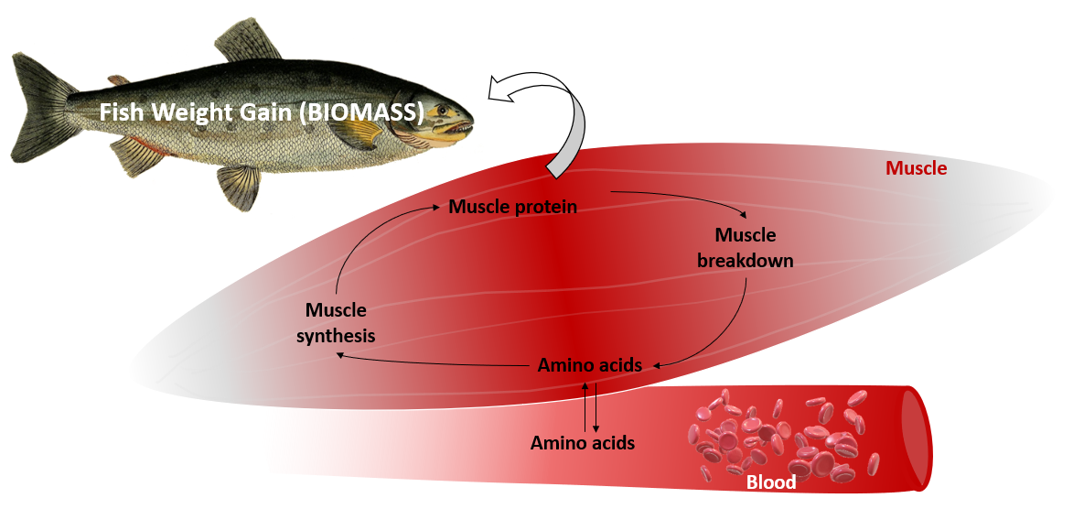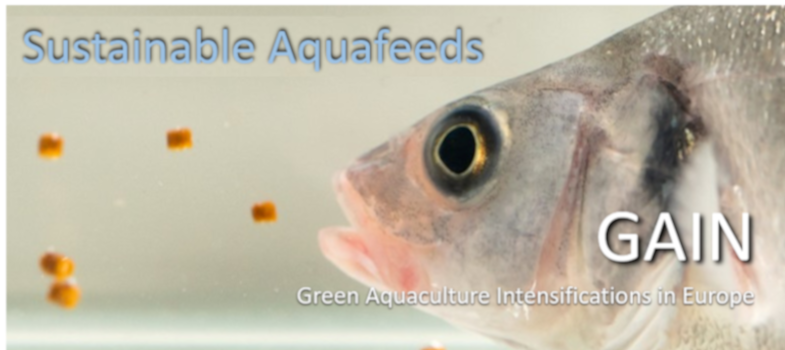Protein and Amino acids
All living organisms contain proteins and their building blocks, amino acids, which are crucial to their structure and metabolism. Proteins are made up of different sequences of amino acids. When two or more consecutive amino acids are linked together by peptide linkages, a peptide chain is formed. The amino acid sequence is the primary structure of the protein, and every protein is unique due to its amino acid sequence. Besides the peptide’s chains, proteins also have hydrogens bonds and van der Waals forces which forms secondary, tertiary and quaternary structures.

Figure 3. Schematic representations of an amino acid, a peptide, and a protein.
Proteins play an important role in the processes of maintenance (e.g., in endogenous protein loss process), growth (e.g., anabolism, synthesis of new body protein), and reproduction in fish. Therefore, each cell type and tissue in the body – e.g., muscles, viscera, bones, tendons, ligaments, and cartilage – requires protein as a component. Body tissues are constantly turning over (broken down and synthesized). Growth in animals occurs when protein synthesis exceeds breakdown, which leads to protein accretion, being this a major factor determining fish live weight (biomass) in aquaculture production.
 Figure 4. Schematic image showing the muscle synthesis and breakdown in fish
Figure 4. Schematic image showing the muscle synthesis and breakdown in fish
Protein is the most expensive and scarcest component in feed formulation. Fish have the ability to use protein for energy, which presents a problem for nutritionists since protein sources are expensive. Any overinclusion that is above the optimal level to support maximum protein retention will be metabolized to produce energy, resulting in higher nitrogen waste and corresponding to environmental impact. By limiting fish to utilizing protein primarily for growth, and the other non-protein components for energy, we reduce nitrogen excretion and consequently, water pollution, and we decrease production costs. Therefore, a fish diet rich in excessive protein cannot be justified.
Moreover, its necessary to guarantee that fish are capable to convert efficiently the ingested protein in growth. To do so, we can calculate the Feed Conversion Ratio (FCR), which is by definition the amount of feed that an animal need to ingested to gain 1 kg of body weight (FCR = Total feed consumed / Total weight of product produced). In order to have good results regarding feed conversion ratios, the fed diet must be efficient. It is not possible for fish and shrimp to synthesize all amino acids and they have to obtain these through their diet.
The fact that fish have been adapted to use protein for energy presents a problem for nutritionists since protein sources are expensive. By limiting fish to utilizing protein primarily for growth, and the other non-protein components for energy, we reduce nitrogen excretion and consequently, water pollution, and we decrease production costs. Therefore, a fish diet rich in excessive protein cannot be justified.
